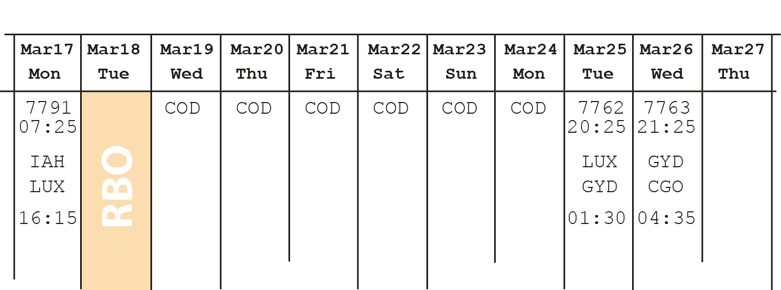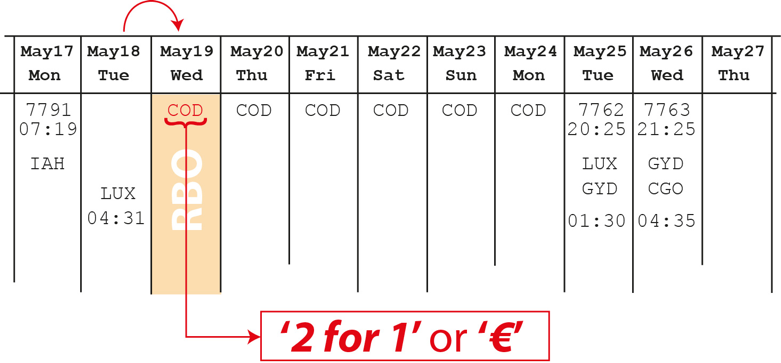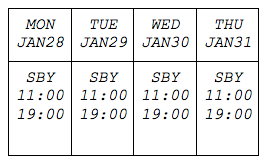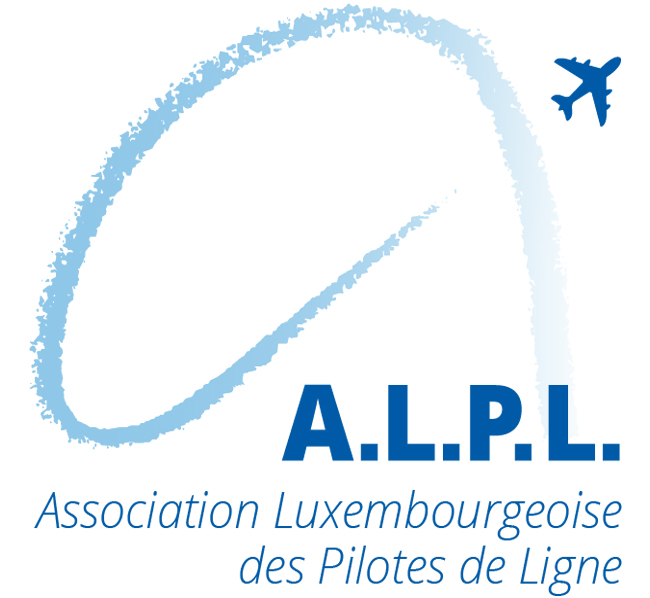In this issue of our series “Know your CWA” we take a closer look at “Off-Days”, starting with Art. B1-37.1.1., which provides general rules for Off-Days. We will expand on the COD and FOD in the next issues.
Below you find the article as published in the current CWA. Further below we provide some comments and explanations for this article.
In general, these rules are applicable for all pilots except for the allocation and entitlement of RBO. The entitlement of RBO for pilots employed at or after 01 December 2015 is regulated differently and explained in the text below.
Like always it is the obligation of the company to follow these rules and a pilot is entitled to a roster reflecting these rules. If a pilot notices a none compliance with the CWA it is their right that his roster will be changed to be fully compliant with the CWA.
B1-37.1. Off-Day Scheme
B1-37.1.1. General
a) An Off-Day is defined as a period of 24 hours free of all Duties commencing at 00:01 local time.
b) All Off-Days will be fixed at Home Base, if not agreed otherwise by the individual Pilot and Company.
c)Each Pilot is entitled to 9 Off-Days at Home Base per 28 days Roster Period. Off- Days will be allotted to each Pilot in 2 blocks and will be clearly identified on the published Rosters as:
i) 6 Consecutive OFF-Days (CODays)
ii) 3 Consecutive Floating OFF Days (FODays)
d) Each block of Off-Days (CODays and FODays) will be preceded by a period of 24 hours Rest Before Off day (24RBO). The rest time guaranteed before a block of Off-Days is 24 hours.
* Note: There are some differences for pilots employed after 01 December 2015, which are mentioned in CWA B3-35.2.
************************
B3-35.2 OFF days
OFF days and RBO will be planned the same as pilots starting before December 01 2015, except for the first 5 years of a contract.
Following rules apply for the first 5 years:
• Year 1: No RBO before FOD and COD
• Year 2: No RBO before FOD and COD
• Year 3: No RBO before COD, 24/18 hours RBO before FOD
• Year 4: 12 hours RBO before COD, 24/18 hours RBO before FOD
• Year 5: same system as pilots starting before December 01 2015
************************************
In the event of a delay, the 24 hours rest can be reduced to 18 hours and no compensation will be given for the reduced rest.
e) If a block of 6 or more CODays and a block of 3 FODays are scheduled back to back, only one 24RBO is scheduled preceding the total block of Off-Days. If during the daily operation phase of a Roster, the FODays are rescheduled away from the block of CODays, a 24RBO is scheduled preceding the block of CODays and 3 FODays.
f) No Duties consisting solely of ground training will be scheduled between:
i) two Off-Day blocks
ii) an Off-Day block and a vacation block
g) No period in excess of 24 consecutive calendar duty days will be scheduled between 2 blocks of OFF days, or a block of OFF days and a block of vacation days.
h) A block of CODays and/or a block of FODays can be planned to start on the day following a ground Duty planned at Home Base provided that this ground Duty is planned to finish no later than 22:00 local time. In this case, the 24RBO does not apply, but shall be compensated by adding an additional day to the FODays within the next unpublished Roster.
Below you will find some comments and explanations regarding Art. B1-37.1.1. However, most of this article should be self-explanatory.
Please take particularly note of the definition of the Rest Before Off- Day (RBO) below.
a) This paragraph defines the term Off- Day as free off all duties commencing at 00.01 local time.
b) Off- Days can only be scheduled at Home Base, which is defined in CWA Part III as “For all Employees at the Company and for the Company itself: Luxembourg Airport.” However a Pilot could agree with the Company that his Off-Days would be scheduled at a different location. This would require mutual consent.
c) Stipulates that per 28 day Roster Period 9 Off- Days have to be scheduled. The Off- Days will be allocated in 2 blocks, 6 as COD and 3 as FOD. Both COD and FOD blocks consist of consecutive blocks of Off- Days.
The text of this paragraph does not prevent that both Off- Day blocks, FOD and COD, are scheduled back-to-back, meaning as one block of consecutive Off- Days. However even if scheduled as a block FOD remain FOD and COD remain COD, meaning that FOD could still be rescheduled without the consent of the pilot. We will expand on FOD and COD in the next issue in more detail.
d) This paragraph defines that before each Off- Day block one RBO needs to be scheduled.
Please note, that per definition a RBO is not an Off- Day and that you may be scheduled to operate into the RBO. However, the RBO will be compensated, if a duty extends into the RBO. We will expand on this in the next issue of this series.
*Note: The following is applicable for pilots employed at or after 01 December 2015.
During the first 5 years, a spool up of RBO as mentioned below is foreseen:
• Year 1: No RBO before FOD and COD
• Year 2: No RBO before FOD and COD
• Year 3: No RBO before COD, 24/18 hours RBO before FOD
• Year 4: 12 hours RBO before COD, 24/18 hours RBO before FOD
• Year 5: same system as pilots starting before 01 December 2015
e) Whenever the blocks of COD and FOD are scheduled back to back, meaning as one consecutive block of Off- Days, the Pilot is only entitled to one RBO before this consecutive block of FOD and COD.
If COD and FOD have been scheduled back to back and if the FOD block is rescheduled away from the COD block, the Pilot is entitled to one RBO before each Off- Day block.
f) This paragraph prevents, that ground training events, e.g. simulator or ground school, are scheduled between two Off- Day blocks or between a block of vacation days and an Off- Day block.
g) This limits the number of consecutive calendar days between Off- Day blocks or between an Off- Day block and a block of vacation days to a maximum of 24 days. It is the obligation of the company that this is observed and a pilot is entitled that his roster is changed accordingly, if more than 24 calendar duty days are scheduled.
h) If before COD or FOD a ground Duty, e.g. simulator or ground school, at Home Base, which is per definition Luxembourg, finishes latest at 22.00 local time, the FOD and COD may start at 00.01 of the next following day. In this case a RBO does not have to be scheduled between the ground Duty and the first COD or FOD. However, the RBO will have to be added to the next unpublished roster period.
Example A:
Ground duty finishes latest at 22.00 local time – the RBO is not required before the Off- Day block: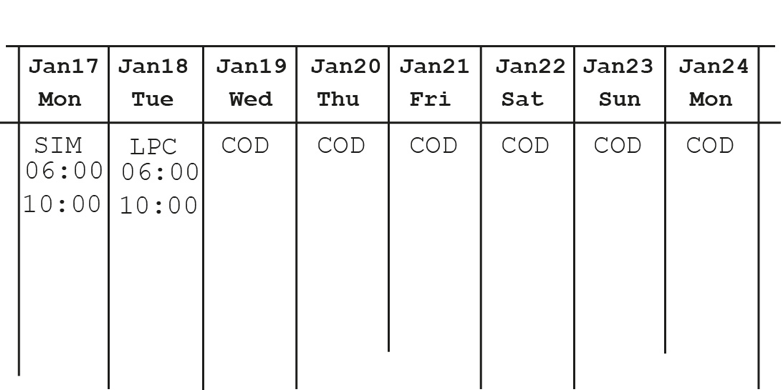
Roster is indicated in UTC.
Example B:
Ground duty finishes after 22.00 local time – the RBO is required before the Off- Day block:
Roster is indicated in UTC.
Please follow this link to download your copy of the CWA for your perusal on the company provided iPad or any other computer for future reference.
If you have any questions do not hesitate to contact us at cvboard@alpl.lu for clarification.
All parts of this series can be found here in the Publications section under Cargolux Board.

